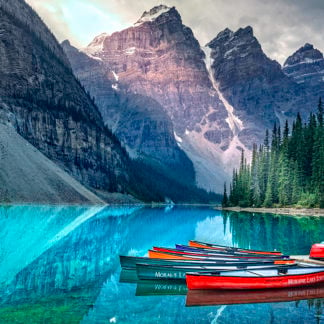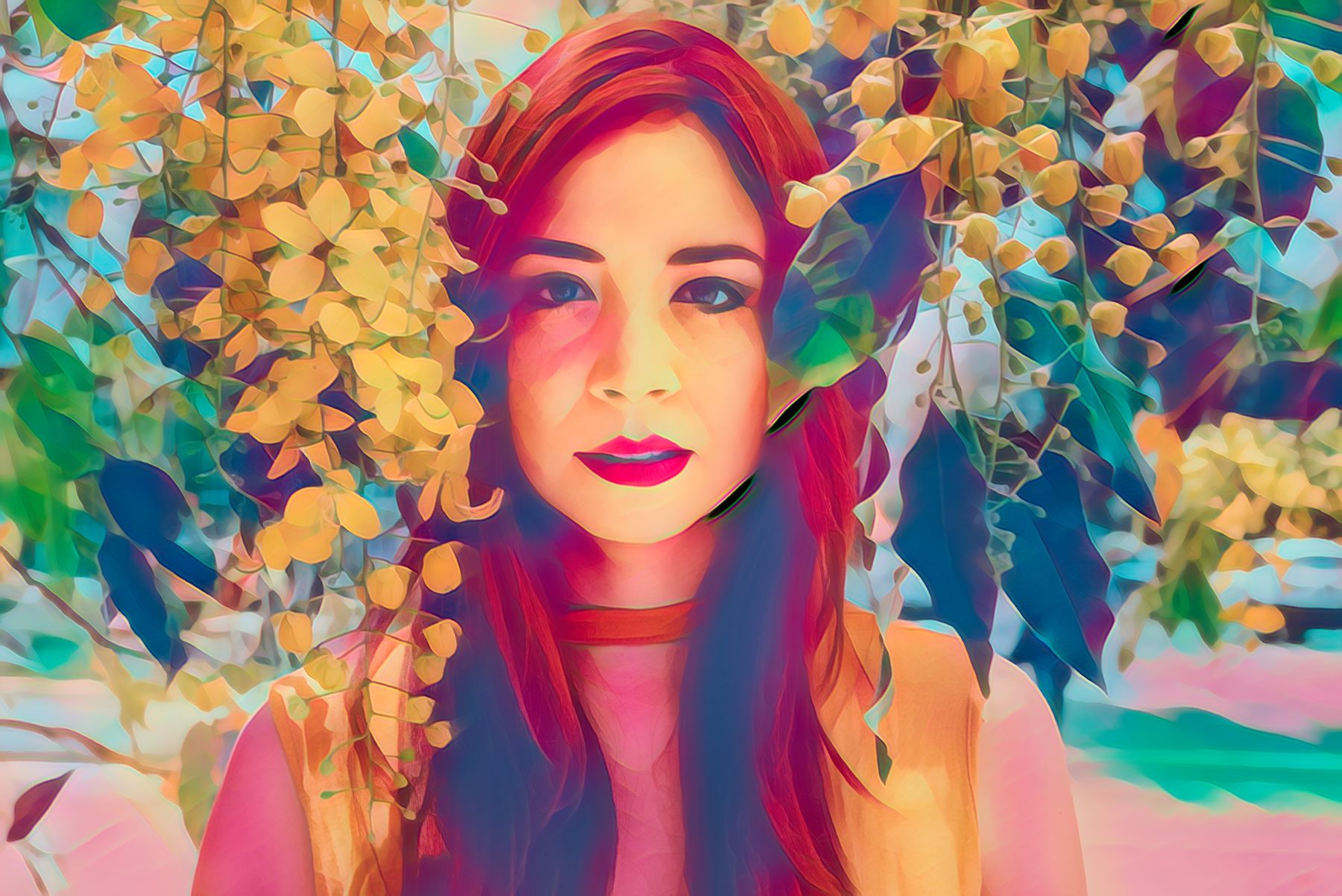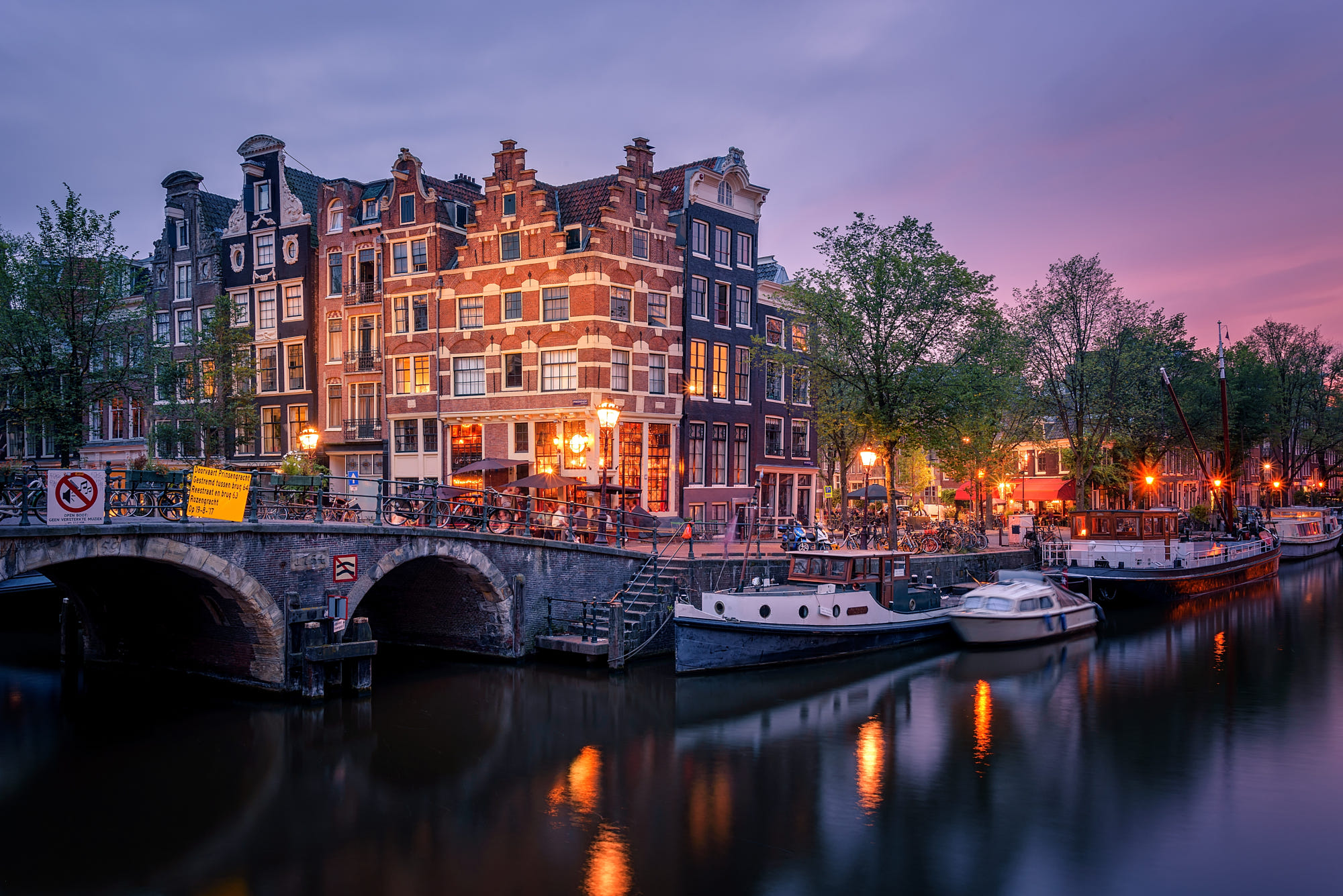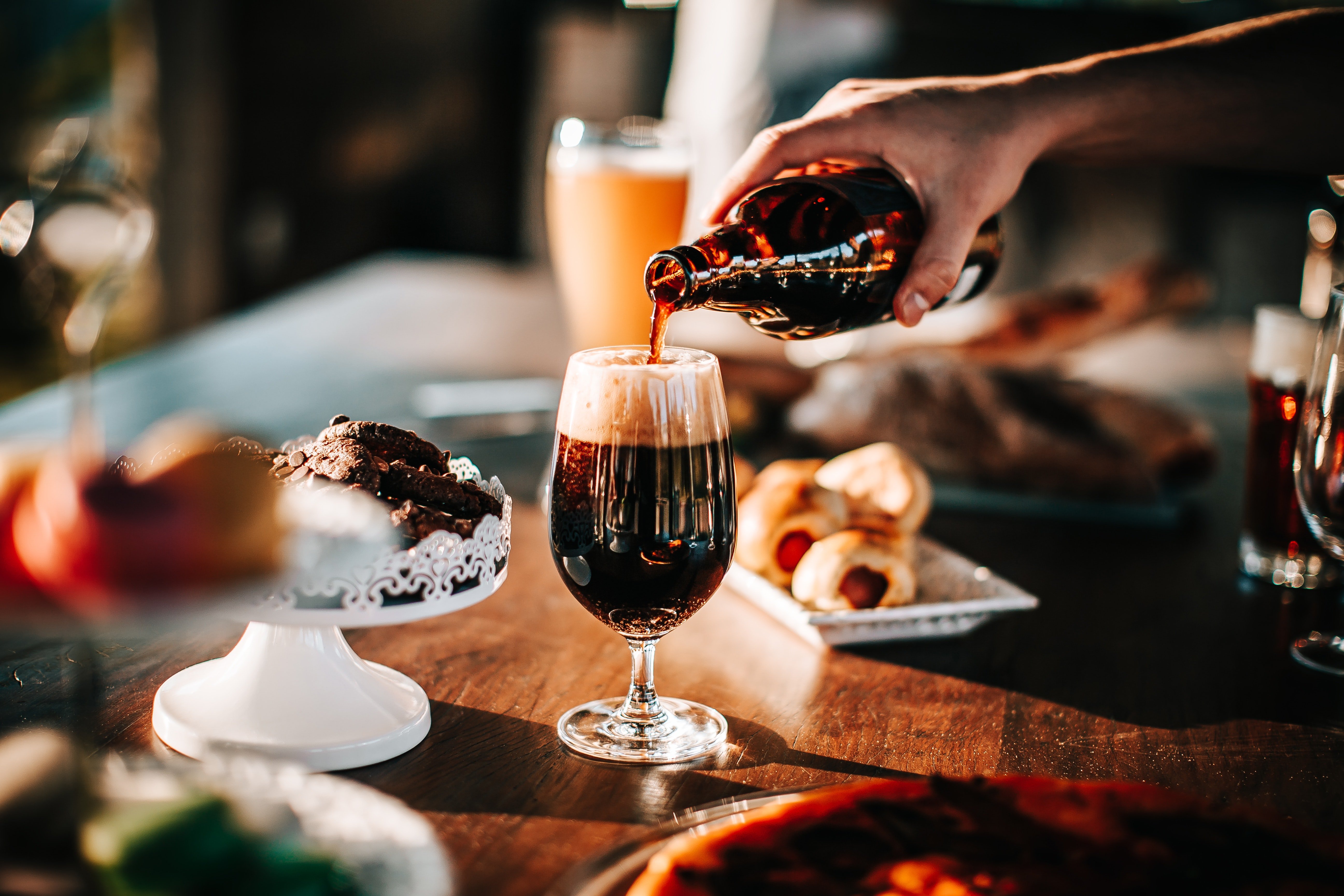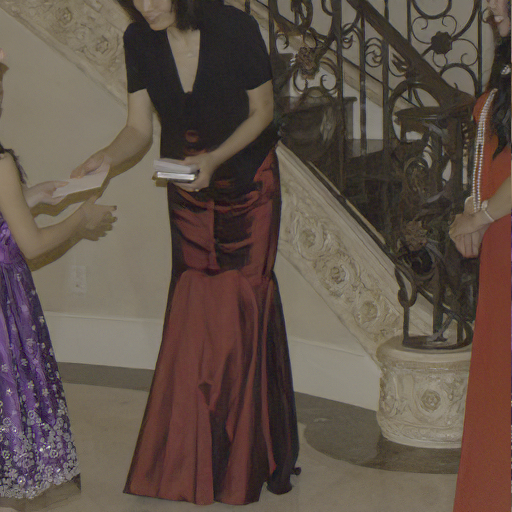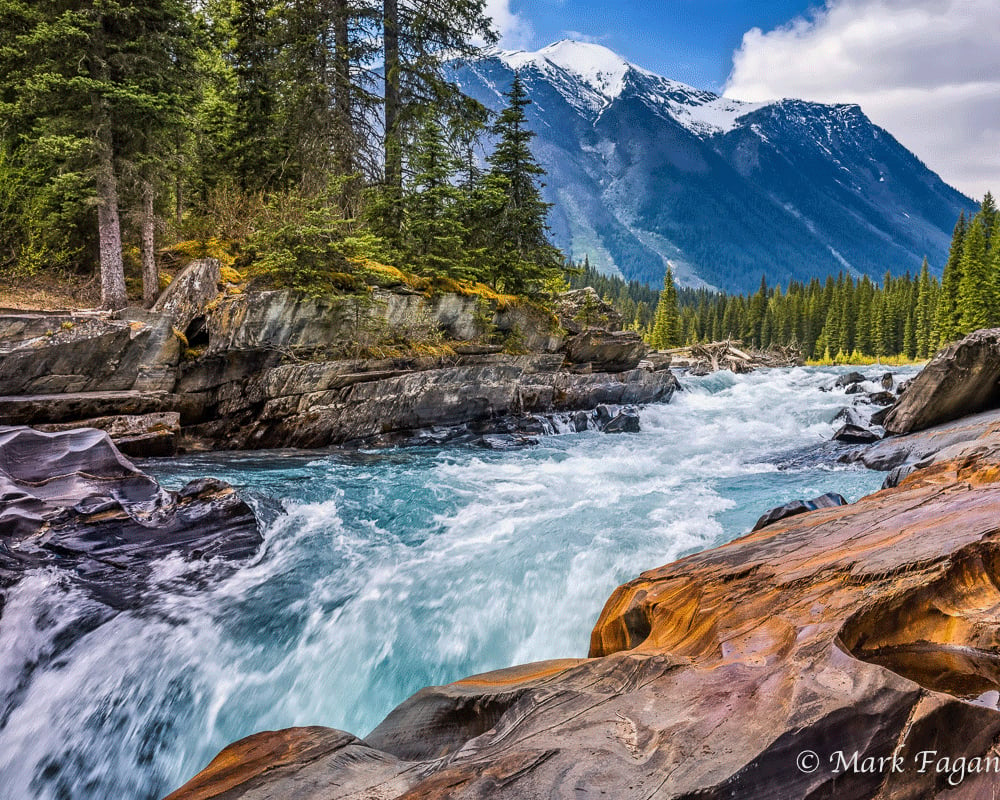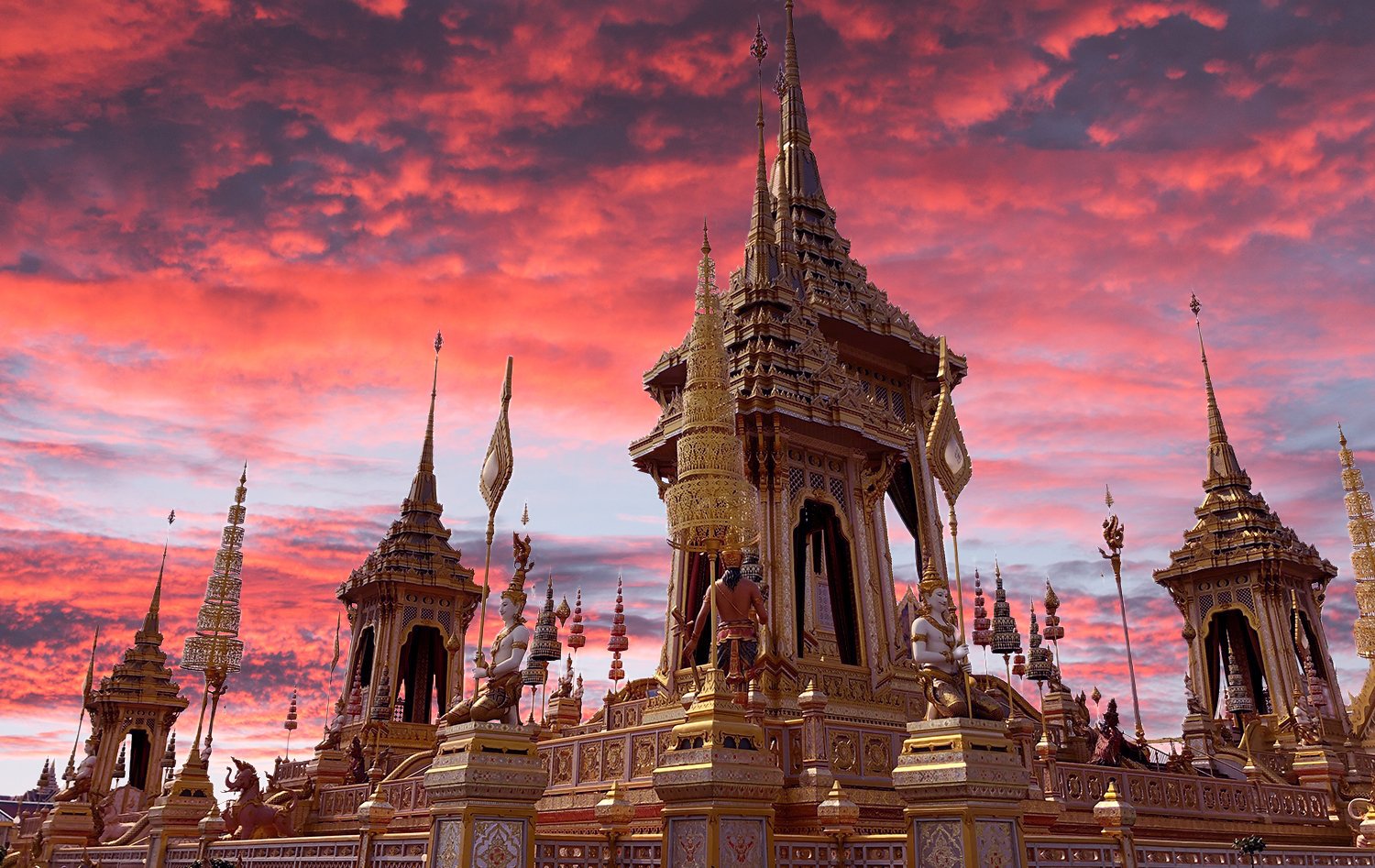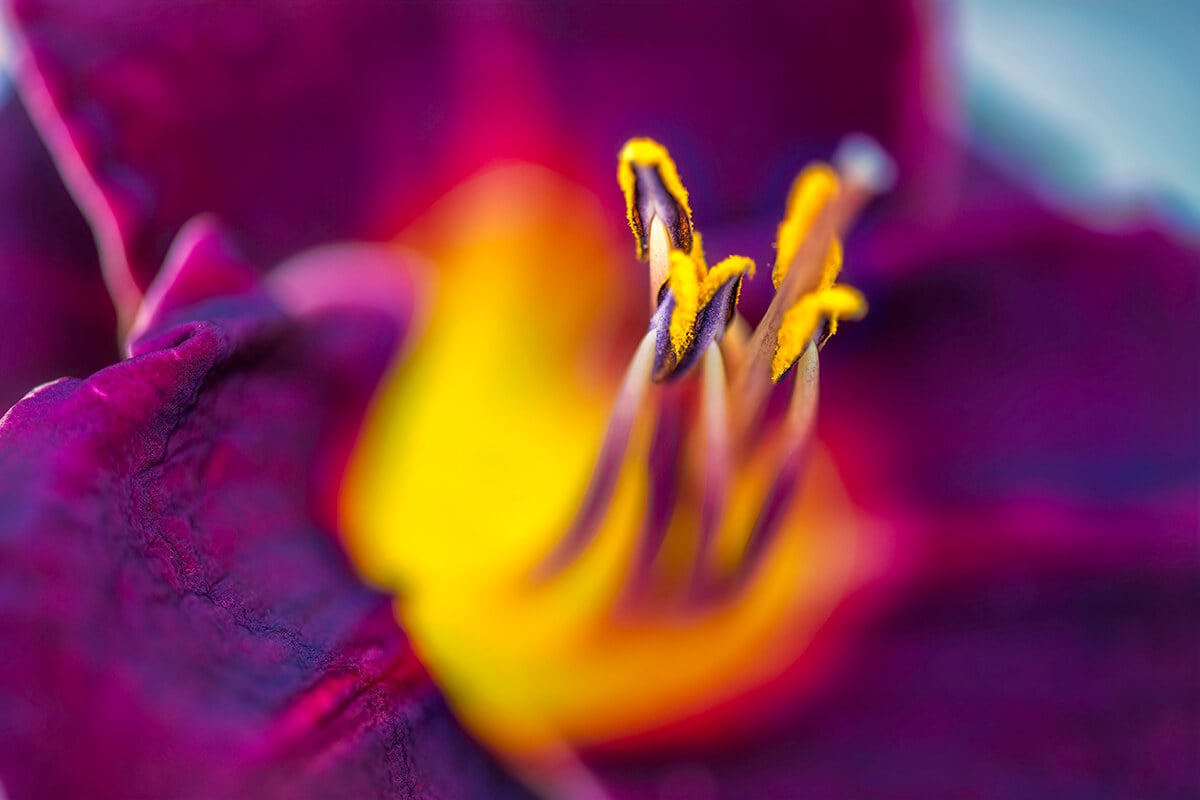
What is Precision Contrast?
The Topaz Studio Precision Contrast Adjustment is very different than your typical contrast slider. Before I was introduced to this awesome contrast tool, I thought all contrast tools were the same (silly me). Before we get into what’s so awesome about the Precision Contrast Adjustment, let’s talk about the typical contrast tool.
Contrast tools make your darks darker and your lights lighter to create a higher contrast between shades in an image. The problem with most contrast tools is it is always a balancing act. You are either blowing out highlights or crushing shadows, since a contrast tool adjusts both your darks and lights of the overall image. So if areas become overdone, you have to do some complicated masking and multiple layers to get a satisfactory result. That’s also another problem, the results are never wow…just good enough.
The Precision Contrast Adjustment features four unique contrast sliders that allow independent control of varying details in your image. The algorithm analyzes your image and categories details as either micro, low, medium, or high contrast. These four sliders then allow you to adjust each one independently of one another. I especially like this functionality because it allows me to bring out the details of clouds or water ripples without also amplifying background details. Another extremely unique quality of the Precision Contrast Adjustment is no matter how strong of an effect you add, there is zero artifacts or halo. It creates a completely natural effect. I think of Precision Contrast like the salt of cooking. It perfectly enhances what’s already there and you should always add at least a little bit to everything you are working on.[/vc_column_text][vc_row][vc_column][vc_empty_space][vc_column_text]
Free Download
[/vc_column_text][vc_empty_space height=”15px”][vc_column_text]The Precision Contrast Adjustment is available within Topaz Studio as a Pro Adjustment. While Pro Adjustments are not free, Topaz Studio is completely free and there are limited functionality within the Precision Contrast Adjustment that is completely free. You can also try all the unlocked functionality for 30 days, completely commitment free. If you’d like to follow along with the Precision Contrast Adjustment, you can click the links below to download Topaz Studio.[/vc_column_text][vc_empty_space height=”15px”][vc_row_inner][vc_column_inner width=”1/2″][vc_btn title=”Windows” shape=”square” color=”primary” align=”center” button_block=”true” link=”url:https%3A%2F%2Fopen_beta.s3.amazonaws.com%2Ftopazstudio_online_installer.exe|||”][/vc_column_inner][vc_column_inner width=”1/2″][vc_btn title=”Mac” shape=”square” color=”primary” align=”center” button_block=”true” link=”url:https%3A%2F%2Fopen_beta.s3.amazonaws.com%2Ftopazstudio_online_installer.dmg|||”][/vc_column_inner][/vc_row_inner][/vc_column][/vc_row][vc_row][vc_column][vc_empty_space][vc_column_text]
What We Will Cover in This Tutorial
[/vc_column_text][vc_empty_space height=”15px”][vc_column_text]1. About Precision Contrast
2. How to Apply an Adjustment
3. How to Apply and Tweak an Adjustment Level Preset
4. How to Create Your Own Effect
5. How to Mask an Effect
6. How to Save an Effect[/vc_column_text][/vc_column][/vc_row][vc_row][vc_column][vc_empty_space][vc_column_text]
Reading not your Thing? Watch the full Tutorial!
[/vc_column_text][vc_column_text]Feel free to watch me work through all the features the Precision Contrast Adjustment has to offer. Every step outlined in this blog post is demonstrated in this video as well as the gallery images at the end of this posting. Hope you enjoy it![/vc_column_text][vc_empty_space height=”15px”][vc_video link=”https://www.youtube.com/watch?v=D9ZnojcrFn0″ align=”center”][vc_empty_space][/vc_column][/vc_row][vc_row][vc_column][vc_column_text]
1. What Makes up the Precision Contrast Adjustment?
[/vc_column_text][vc_row_inner][vc_column_inner width=”2/3″][vc_empty_space height=”15px”][vc_single_image image=”46522″ img_size=”large” onclick=”link_image”][/vc_column_inner][vc_column_inner width=”1/3″][vc_empty_space][vc_empty_space][vc_empty_space][vc_column_text]We have wrapped all of our technology into easy to use sliders, so achieving the perfect contrast is so simple. After you apply the Precision Contrast Adjustment, you will see this 8 slider panel pop up in the adjustments panel (If you don’t, click the blue Try Pro link at the bottom of the panel). The first four sliders control the contrast of your image, the color slider affects the micro-contrast color, and the last three are traditional brightness, shadow and highlight sliders to ensure you have the perfect combination of lighting and contrast.[/vc_column_text][/vc_column_inner][/vc_row_inner][vc_empty_space][/vc_column][/vc_row][vc_row][vc_column][vc_column_text]
Breakdown of the Sliders
[/vc_column_text][vc_row_inner][vc_column_inner width=”1/4″][vc_empty_space height=”15px”][vc_single_image image=”46547″ img_size=”large”][/vc_column_inner][vc_column_inner width=”3/4″][vc_column_text]1. Micro:
This slider is great for enhancing very minute differences in contrast. Slight ripples, light clouds or smoke, and hair can be enhanced using this slider.
2. Low:
This slider enhances small differences in contrast, about twice the value of the Micro slider. The low detail slider works great for larger waves, storm clouds, trees, and textures.
3. Medium:
This slider enhances larger details. The Medium slider is great for adjusting images that feature natural elements like rocks, trees, or other organic material that have a heavier contrast.
4. High:
This slider enhances the highest of contrasts in images and is perfect for editing the darkest areas.
5. Color:
Sometimes, when adjusting contrast, color can be lost in small details. The Color slider selectively brings back those colors without affecting larger details of the image.
6. Brightness:
Easily update the overall image brightness by adjusting the Brightness slider.
7. Shadow:
Selectively manipulate shadows and dark tones within any image with the Shadow slider. Lighten all the shadows within an image by increasing the value of the slider or darken shadows and lowlights by decreasing the value. Any adjustment made will only affect the darker image tones and shadows.
8. Highlight:
Darken all the highlights within an image by decreasing the value of the slider or increase the brightness of highlights by increasing the value. The adjustment will only selectively affect the lightest areas of the image.[/vc_column_text][vc_empty_space][/vc_column_inner][/vc_row_inner][vc_empty_space][/vc_column][/vc_row][vc_row][vc_column][vc_column_text]
2. How to Apply the Precision Contrast Adjustment to an Image
[/vc_column_text][vc_empty_space height=”15px”][vc_row_inner][vc_column_inner width=”2/3″][vc_empty_space height=”15px”][vc_single_image image=”46509″ img_size=”full” alignment=”center”][/vc_column_inner][vc_column_inner width=”1/3″][vc_column_text]First things first, you’ll want to open an image. If this is your first time opening Topaz Studio, you’ll notice that there is a lot of empty fields. This is because you’ll need to open an image to get started! There is more than one way that you can open an image .
- Drag and drop an image from your computer into the program.
- Click Open (located in the Canvas) and navigate through your files. Select an image and click Open.
- Click Open in the menu bar. Select an image and click Open.
- Go to Menu > File > Open Image… and then select an image and click Open.
- Use your shortcut keys (such as Command O or Control O).
[/vc_column_text][/vc_column_inner][/vc_row_inner][vc_empty_space][/vc_column][/vc_row][vc_row][vc_column][vc_column_text]
Apply the Adjustment to Your Image
[/vc_column_text][vc_row_inner][vc_column_inner width=”2/3″][vc_empty_space height=”15px”][vc_single_image image=”46573″ img_size=”large” onclick=”link_image”][/vc_column_inner][vc_column_inner width=”1/3″][vc_empty_space][vc_empty_space][vc_column_text]After you have successfully opened an image, you will want to apply the Precision Contrast Adjustment. This can be done one of two ways:
- Clicking Adjustments > Precision Contrast from the top Menu Bar.
- Clicking More > Precision Contrast from the Adjustment tool bar located on the right-hand side of your workspace.
[/vc_column_text][/vc_column_inner][/vc_row_inner][vc_empty_space][/vc_column][/vc_row][vc_row][vc_column][vc_column_text]
Familiarize yourself with the Adjustment
[/vc_column_text][vc_column_text]Don’t be afraid to play around with all the sliders. I can tell you all day how awesome this adjustment is and what it can do, but you aren’t going to see the true power of the Precision Contrast Adjustment until you play with it for yourself. Move the sliders around and see how each one affects your image. There is unlimited undo and redo if you ever need to use it![/vc_column_text][vc_empty_space][/vc_column][/vc_row][vc_row][vc_column][vc_column_text]
Select a Preset
[/vc_column_text][vc_row_inner][vc_column_inner width=”2/3″][vc_empty_space height=”15px”][vc_single_image image=”46598″ img_size=”large” alignment=”center”][/vc_column_inner][vc_column_inner width=”1/3″][vc_empty_space][vc_column_text]When you click the preset dropdown, you will see 6 presets that were created just for you from Topaz Labs. Each will affect your image differently. For this beach image, I chose Contrast Boost as my starting point. For many images, the presets look great as is. If you feel it’s a little strong for your taste, don’t forget that you can always turn down the opacity of each adjustment to make more subtle edits.[/vc_column_text][/vc_column_inner][/vc_row_inner][vc_empty_space][/vc_column][/vc_row][vc_row][vc_column][vc_column_text]
Step 3: How to Apply and Tweak an Adjustment Level Preset
[/vc_column_text][vc_row_inner][vc_column_inner width=”1/4″][vc_empty_space height=”15px”][vc_single_image image=”46594″ img_size=”large”][/vc_column_inner][vc_column_inner width=”3/4″][vc_empty_space height=”15px”][vc_column_text]Whether you have full functionality or have limited functionality in the Precision Contrast Adjustment, you will always have access to adjustment level presets. You can access the presets by clicking the default menu from within the Precision Contrast Adjustment Panel. I have placed a blue box around the dropdown to the left if you’re having problems locating the dropdown menu. Select the preset that looks best on your image.[/vc_column_text][/vc_column_inner][/vc_row_inner][vc_empty_space][/vc_column][/vc_row][vc_row][vc_column][vc_column_text]
Tweak a Preset
[/vc_column_text][vc_row_inner][vc_column_inner width=”2/3″][vc_empty_space height=”15px”][vc_single_image image=”46598″ img_size=”large” alignment=”center”][/vc_column_inner][vc_column_inner width=”1/3″][vc_empty_space][vc_empty_space][vc_column_text]For being a one-click effect the Contrast Boost Preset does an awesome job, but I would like to customize this to my image. I like to use the presets as inspiration to get me started. I rarely ever just click and leave the adjustment as is. You can completely transform the effect with a little masking and tweaking. The best thing about this approach is I can create a great edit in under 5 minutes. There is no right or wrong way to go about this. Remember photo editing is an art and I strongly believe that art is in the eye of the beholder.[/vc_column_text][/vc_column_inner][/vc_row_inner][vc_empty_space][/vc_column][/vc_row][vc_row][vc_column][vc_column_text]
Perfecting a Preset
[/vc_column_text][vc_row_inner][vc_column_inner width=”1/4″][vc_empty_space height=”15px”][vc_single_image image=”46628″ img_size=”large”][/vc_column_inner][vc_column_inner width=”3/4″][vc_empty_space][vc_empty_space][vc_empty_space height=”15px”][vc_column_text]Here are the changes I made to the Contrast Boost Effect. I just played around with the sliders until I created a result that I liked. This is the technique I use if I’m just wanting to do some pretty simple quick edits. The Precision Contrast Adjustment works as a great cornerstone to add other adjustments on top of. Again, I can’t emphasize enough the importance of just diving in and familiarizing yourself with this adjustment. You’ll find yourself photographing images later and thinking, “the details in this flower is going to look awesome with a touch of micro-contrast from the Precision Contrast Adjustment.”[/vc_column_text][/vc_column_inner][/vc_row_inner][vc_empty_space][vc_column_text]
Here is the before and after:
[/vc_column_text][vc_empty_space height=”15px”][vc_row_inner][vc_column_inner width=”1/2″][vc_single_image image=”46639″ img_size=”large” alignment=”center” onclick=”link_image”][/vc_column_inner][vc_column_inner width=”1/2″][vc_single_image image=”46645″ img_size=”large” alignment=”center” onclick=”link_image”][/vc_column_inner][/vc_row_inner][vc_empty_space height=”15px”][vc_column_text]I love how Precision Contrast was able to really bring out the details in the water and in the shadow area of the landscape. I also like how it didn’t overpower the grassy foreground and take away from the water.[/vc_column_text][vc_empty_space][/vc_column][/vc_row][vc_row][vc_column][vc_column_text]
4. How to Create your Own Effect
[/vc_column_text][vc_empty_space height=”15px”][vc_column_text]For the next part of this tutorial, I’m going to use this cloud image. I love how the Precision Contrast Adjustment has the ability to bring out the details in clouds. If you ever have fog or clouds, I strongly suggest adding a little Precision Contrast. It does an awesome job bringing out details that you didn’t even know were there. It really does an amazing job transforming just ok images into really dramatic ones.[/vc_column_text][vc_empty_space height=”15px”][vc_single_image image=”46648″ img_size=”large” alignment=”center” onclick=”link_image”][vc_empty_space][vc_column_text]
Apply the Precision Contrast Adjustment
[/vc_column_text][vc_row_inner][vc_column_inner width=”2/3″][vc_empty_space height=”15px”][vc_single_image image=”46661″ img_size=”large” alignment=”center” onclick=”link_image”][/vc_column_inner][vc_column_inner width=”1/3″][vc_empty_space][vc_empty_space][vc_empty_space][vc_column_text]Like before, you are going to apply the Precision Contrast Adjustment to the image. This time, we aren’t going to choose a preset from the dropdown menu. We are going to create a custom effect from scratch.[/vc_column_text][/vc_column_inner][/vc_row_inner][vc_empty_space][vc_column_text]
Create a Custom Effect
[/vc_column_text][vc_row_inner][vc_column_inner width=”1/4″][vc_empty_space height=”15px”][vc_single_image image=”46789″ img_size=”large” alignment=”center” onclick=”link_image”][/vc_column_inner][vc_column_inner width=”3/4″][vc_empty_space][vc_empty_space][vc_column_text]I really wanted to bring out the texture in the clouds, so I really cranked up the strength of the adjustment. I don’t like how it looks on the subject of the photograph, but we will address that in the next step! The values I used for the cloud image are to the left.[/vc_column_text][/vc_column_inner][/vc_row_inner][vc_empty_space][/vc_column][/vc_row][vc_row][vc_column][vc_column_text]
5. Masking an Effect
[/vc_column_text][vc_row_inner][vc_column_inner width=”2/3″][vc_empty_space height=”15px”][vc_single_image image=”46803″ img_size=”large” alignment=”center”][/vc_column_inner][vc_column_inner width=”1/3″][vc_empty_space][vc_empty_space][vc_empty_space][vc_column_text]I really liked how dramatic the clouds are after applying the Precision Contrast Adjustment, but I don’t really like how it is impacting the subject of the photo. His skin looks a little weird and I really wanted the clouds to be the focal point. I don’t want as much detail brought out on the rocks, so I’m going to mask this effect out some.[/vc_column_text][/vc_column_inner][/vc_row_inner][vc_empty_space][/vc_column][/vc_row][vc_row][vc_column][vc_column_text]
Click on the Adjustment Level Masking Icon
[/vc_column_text][vc_row_inner][vc_column_inner width=”1/6″][vc_empty_space height=”15px”][vc_single_image image=”46805″ img_size=”medium” alignment=”center”][/vc_column_inner][vc_column_inner width=”5/6″][vc_column_text]Click on the adjustment level masking icon that’s located at the top of each adjustment panel. It is just to the right of the Adjustment name.[/vc_column_text][/vc_column_inner][/vc_row_inner][vc_empty_space][/vc_column][/vc_row][vc_row][vc_column][vc_column_text]
Select Brush Masking
[/vc_column_text][vc_row_inner][vc_column_inner width=”2/3″][vc_empty_space height=”15px”][vc_single_image image=”46806″ img_size=”large” alignment=”center”][/vc_column_inner][vc_column_inner width=”1/3″][vc_empty_space][vc_empty_space][vc_column_text]I didn’t want to completely mask out the Precision Contrast Adjustment on the rocks and subject, so I chose to have my mask density at 0.33. Also, the brush masking has this awesome functionality called edge aware. So there is no need to create the perfect mask, just keep the edge of your subject between the green and red circles and it will do all the heavy lifting for you! It’s so awesome and a great time saver. While I won’t go into depth about our masking, you can read more about Topaz Studio Masking here. Once you are satisfied with your mask, just click done! If you need to tweak the mask at all, you can adjust the density as needed.[/vc_column_text][/vc_column_inner][/vc_row_inner][vc_empty_space height=”15px”][vc_column_text]
Here is the before and after:
[/vc_column_text][vc_empty_space height=”15px”][vc_row_inner][vc_column_inner width=”1/2″][vc_single_image image=”46648″ img_size=”large” alignment=”center”][/vc_column_inner][vc_column_inner width=”1/2″][vc_single_image image=”46829″ img_size=”large” alignment=”center”][/vc_column_inner][/vc_row_inner][vc_empty_space][/vc_column][/vc_row][vc_row][vc_column][vc_column_text]
Saving Your Custom Effect
[/vc_column_text][vc_row_inner][vc_column_inner width=”1/6″][vc_empty_space height=”15px”][vc_single_image image=”46824″ img_size=”medium” alignment=”center”][vc_empty_space height=”15px”][vc_single_image image=”46825″ img_size=”medium” alignment=”center”][/vc_column_inner][vc_column_inner width=”5/6″][vc_column_text]Save and Share Your Effects. I really liked how this effect ended up, so I’m going to save this effect for future use! You can either save the effect as a preset level (top icon) or global effect (bottom icon). Global presets allow you to share your creation with others by selecting ‘Yes’ in the Public field. Your effect will be shared to the entire Topaz Community instantly![/vc_column_text][/vc_column_inner][/vc_row_inner][vc_empty_space][/vc_column][/vc_row][vc_row][vc_column][vc_column_text]
Gallery
[/vc_column_text][vc_column_text]You can apply the same effect quickly and effortlessly by adding your new custom preset level effect to many images and then tweaking it to each individual image. This can be great if you took multiple images in similar light or are wanting to create a series of images that resemble one another. Here are some more before and after images I edited. Thanks for reading and hope you’ve gained a little more understanding of the Precision Contrast Adjustment![/vc_column_text][vc_row_inner][vc_column_inner width=”1/2″][vc_empty_space height=”15px”][vc_column_text]
Before
[/vc_column_text][vc_empty_space height=”15px”][vc_single_image image=”46831″ img_size=”large” alignment=”center”][vc_empty_space height=”15px”][vc_single_image image=”46833″ img_size=”large” alignment=”center”][vc_empty_space height=”15px”][vc_single_image image=”46834″ img_size=”large” alignment=”center”][vc_empty_space height=”15px”][vc_single_image image=”46853″ img_size=”large” alignment=”center”][/vc_column_inner][vc_column_inner width=”1/2″][vc_empty_space height=”15px”][vc_column_text]
After
[/vc_column_text][vc_empty_space height=”15px”][vc_single_image image=”46835″ img_size=”large” alignment=”center”][vc_empty_space height=”15px”][vc_single_image image=”46836″ img_size=”large” alignment=”center”][vc_empty_space height=”15px”][vc_single_image image=”46837″ img_size=”large” alignment=”center”][vc_empty_space height=”15px”][vc_single_image image=”46854″ img_size=”large” alignment=”center”][/vc_column_inner][/vc_row_inner][vc_empty_space][/vc_column][/vc_row][vc_row][vc_column][vc_column_text]
Thanks for Reading!
[/vc_column_text][vc_column_text]That’s all I have for today! That’s all the basic functionality that is contained in the Precision Contrast Adjustment. From using pre-made effects to creating your effects, the Precision Contrast gives you the freedom to edit in the way that works best for you.
We’ll be adding more tutorials and videos so be sure to give us a follow to learn more!
If you’d like to share your images with us, tag us on Instagram with @topazlabs and Twitter with @topazlabs. We’re also on Facebook and YouTube![/vc_column_text][vc_empty_space][/vc_column][/vc_row][vc_row][vc_column][vc_empty_space][vc_column_text]
Free Download
[/vc_column_text][vc_empty_space height=”15px”][vc_row_inner][vc_column_inner width=”1/2″][vc_btn title=”Windows” shape=”square” color=”primary” align=”center” button_block=”true” link=”url:https%3A%2F%2Fopen_beta.s3.amazonaws.com%2Ftopazstudio_online_installer.exe|||”][/vc_column_inner][vc_column_inner width=”1/2″][vc_btn title=”Mac” shape=”square” color=”primary” align=”center” button_block=”true” link=”url:https%3A%2F%2Fopen_beta.s3.amazonaws.com%2Ftopazstudio_online_installer.dmg|||”][/vc_column_inner][/vc_row_inner][/vc_column][/vc_row][vc_row][vc_column][vc_empty_space height=”15px”][vc_separator border_width=”3″][vc_empty_space height=”15px”][vc_column_text]
About Taylor L. Seaton
[/vc_column_text][vc_empty_space height=”15px”][vc_row_inner][vc_column_inner width=”1/6″][vc_single_image image=”8720″ img_size=”medium” alignment=”center” style=”vc_box_circle_2″][/vc_column_inner][vc_column_inner width=”5/6″][vc_empty_space][vc_column_text]Taylor Seaton is a 2016 graduate from Angelo State University. While attending ASU, she obtained her Bachelor of Fine Arts with a concentration in Graphic Design and an area of emphasis in Business Management and Marketing. She also played volleyball at the collegiate level. She is currently the Social Media Manager at Topaz Labs.[/vc_column_text][/vc_column_inner][/vc_row_inner][vc_empty_space height=”15px”][vc_separator border_width=”3″][vc_empty_space height=”15px”][/vc_column][/vc_row]


